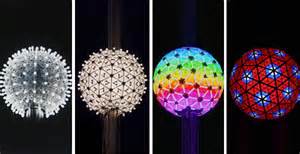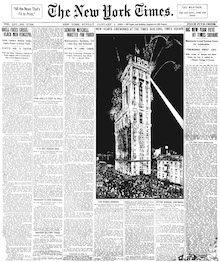 The actual notion of a ball “dropping” to signal the passage of time dates back long before New Year’s Eve was ever celebrated in Times Square.
The actual notion of a ball “dropping” to signal the passage of time dates back long before New Year’s Eve was ever celebrated in Times Square.
The first “time-ball” was installed atop England’s Royal Observatory at Greenwich in 1833. This ball would drop at one o’clock every afternoon, allowing the captains of nearby ships to precisely set their chronometers (a vital navigational instrument).
Around 150 public time-balls are believed to have been installed around the world after the success at Greenwich, though few survive and still work. The tradition is carried on today in places like the United States Naval Observatory in Washington, DC, where a time-ball descends from a flagpole at noon each day – and of course, once a year in Times Square, where it marks the stroke of midnight not for a few ships’ captains, but for over one billion people watching worldwide.

Front page, New York Times, January 1, 1905
Revelers began celebrating New Year’s Eve in Times Square as early as 1904, but it was in 1907 that the New Year’s Eve Ball made its maiden descent from the flagpole atop One Times Square. Seven versions of the Ball have been designed to signal the New Year.
The first New Year’s Eve Ball, made of iron and wood and adorned with one hundred 25-watt light bulbs, was 5 feet in diameter and weighed 700 pounds. It was built by a young immigrant metalworker named Jacob Starr, and for most of the twentieth century the company he founded, sign maker Artkraft Strauss, was responsible for lowering the Ball.
As part of the 1907-1908 festivities, waiters in the fabled “lobster palaces” and other deluxe eateries in hotels surrounding Times Square were supplied with battery-powered top hats emblazoned with the numbers “1908” fashioned of tiny light bulbs. At the stroke of midnight, they all “flipped their lids” and the year on their foreheads lit up in conjunction with the numbers “1908” on the parapet of the Times Tower lighting up to signal the arrival of the new year.
The Ball has been lowered every year since 1907, with the exceptions of 1942 and 1943, when the ceremony was suspended due to the wartime “dimout” of lights in New York City.
This edited history of the time-ball and New Year’s Eve in Times Square is taken from the official
Times Square website.